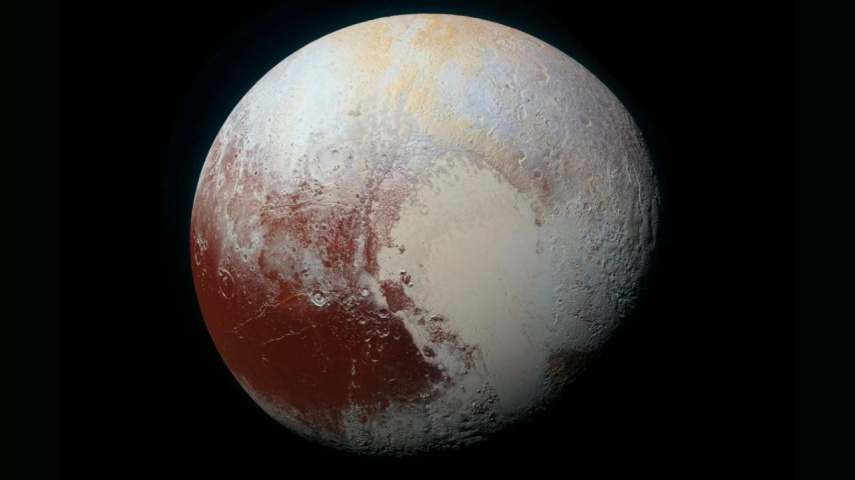How did Pluto get its heart? Scientists share explanation about dwarf planet's cute feature
Tombaugh Regio, AKA Pluto's heart, is a bright, valentine-shaped area on the dwarf planet's surface. Its formation has long piqued scientists' interest, as one of Pluto's deepest mysteries.

-
Scientists are exploring where Pluto's heart-shaped region, called Tombaugh Regio came from
-
Scientists suggest Pluto's heart was formed through a dramatic collision with another celestial body
Pluto, the distant dwarf planet on the edge of our solar system, has long piqued scientists' interest with its iconic "heart" feature. The shape is officially known as Tombaugh Regio, as per Universe Today. Researchers believe they have solved the mystery of its formation, shedding light on an ancient collision that created this celestial valentine.
In a study published in Nature Astronomy, astronomers from the University of Bern in Switzerland and the University of Arizona present their findings on how Pluto's heart formed. They propose a scenario involving a primordial collision with a planetary body about 400 miles wide, describing the event with the scientific term "splat."
The Splat theory
This new explanation calls into question previous theories, most notably the idea that Pluto has a deep subsurface ocean. Adeene Denton, the study's co-author, emphasizes the significance of this discovery, saying, "The formation of the heart provides a critical window into the earliest periods of Pluto's history." "By expanding our investigation to include more unusual formation scenarios, we've learned some totally new possibilities for Pluto's evolution," Denton said in a statement.
Simulations and discoveries
Using computer simulations, the researchers investigated various impact scenarios, eventually concluding that a 400-mile-wide object composed of 15% rock, striking Pluto at a 30-degree angle and low velocity, best matched the observed features of Tombaugh Regio. Rather than a typical impact crater, the collision produced a bright, icy teardrop shape, with the impacting body's rocky core serving as the teardrop's tail.
This discovery not only sheds light on Pluto's geological evolution, but also raises questions about the existence of a subsurface ocean. Previous theories used this ocean to explain why the impact region did not drift toward Pluto's nearest pole over time. However, the study suggests that if ammonia's influence is negligible, Pluto may not have a subsurface ocean at all.
As scientists work to solve the mysteries of Pluto, the New Horizons spacecraft continues its journey through our solar system's outer reaches. Recent findings of higher-than-expected levels of interplanetary dust point to more discoveries to come. Mission scientists are optimistic about finding more icy worlds to observe in the late 2020s or 2030s.
ALSO READ: Massive star explosion in sky expected; stargazers await once-in-a-lifetime event





 JOIN OUR WHATSAPP CHANNEL
JOIN OUR WHATSAPP CHANNEL







































































































